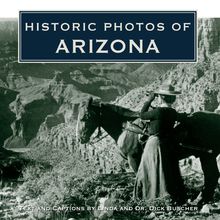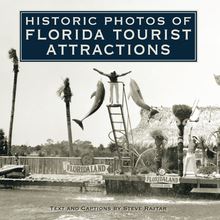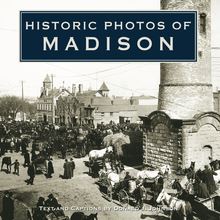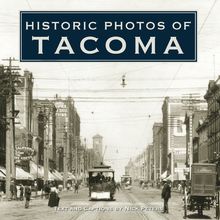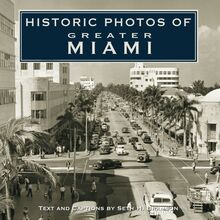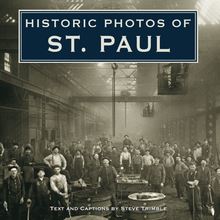Historic Photos of the Hudson Line , livre ebook
110
pages
English
Ebooks
2009
Vous pourrez modifier la taille du texte de cet ouvrage
Obtenez un accès à la bibliothèque pour le consulter en ligne En savoir plus
Découvre YouScribe et accède à tout notre catalogue !
Découvre YouScribe et accède à tout notre catalogue !
110
pages
English
Ebooks
2009
Vous pourrez modifier la taille du texte de cet ouvrage
Obtenez un accès à la bibliothèque pour le consulter en ligne En savoir plus
Publié par
Date de parution
01 novembre 2009
EAN13
9781618584366
Langue
English
Poids de l'ouvrage
18 Mo
For thousands of years prior to Henry Hudson’s voyage, the Hudson River was a vital commercial and strategic route for the indigenous peoples who settled near its banks. The river’s importance continued for centuries afterward, linking the great trading center of Manhattan with remote places upstate and beyond. In Revolutionary times, the successful struggle for the Hudson was key to American victory over the power of the British military.
The Hudson River railroad succeeded earlier modes of transportation in the Hudson Valley—the river sloop, the Albany Post Road, the steamboat, and the Erie Canal. The Hudson Line was both an early product of America’s industrial age and a catalyst for the intense and complex developments of that age.
The advent of photography coincided with the inauguration of the Hudson River railroad, and American photographers were on-hand to witness and record the progress of commerce and community in the villages, towns, and cities along the Hudson River Line.
Publié par
Date de parution
01 novembre 2009
EAN13
9781618584366
Langue
English
Poids de l'ouvrage
18 Mo
HISTORIC PHOTOS OF
THE HUDSON LINE
T EXT AND C APTIONS BY H ENRY J OHN S TEINER
A steam locomotive makes its way up the east bank of the Harlem River en route toward Spuyten Duyvil. The Washington Bridge beneath which the train passes opened on December 1, 1888. Today, the area under the right arch is mainly occupied by the Major Deagan Expressway-Interstate 87.
HISTORIC PHOTOS OF
THE HUDSON LINE
Turner Publishing Company
200 4th Avenue North Suite 950
Nashville, Tennessee 37219
(615) 255-2665
www.turnerpublishing.com
Historic Photos of the Hudson Line
Copyright 2009 Turner Publishing Company
All rights reserved.
This book or any part thereof may not be reproduced or transmitted in any form or by any means, electronic or mechanical, including photocopying, recording, or by any information storage and retrieval system, without permission in writing from the publisher.
Library of Congress Control Number: 2009922655
ISBN: 978-1-59652-543-6
Printed in China
09 10 11 12 13 14-0 9 8 7 6 5 4 3 2 1
C ONTENTS
A CKNOWLEDGMENTS
P REFACE
L OST T RANQUILLITY AND A C HANGING S HORELINE (1853-1899)
C IVIC P RIDE AND C IVIC P ROJECTS (1900-1920)
T HROUGH R OARING T IMES AND R UINED (1921-1940)
T HE W AR Y EARS AND P OSTWAR E RA (1941-1960 S )
N OTES ON THE P HOTOGRAPHS
The Lansing-Pemberton House on North Pearl and Columbia streets in Albany. Erected in 1710, the structure survived into the early twentieth century, when it was demolished. The Hudson Line linked Albany in the north and New York City to the south with towns and communities situated beside the Hudson River and its vicinity, through which the line passed.
A CKNOWLEDGMENTS
This volume, Historic Photos of the Hudson Line , is the result of the cooperation and efforts of many individuals and organizations. It is with great thanks that we acknowledge the valuable contribution of the following for their generous support:
The Library of Congress
The New York Public Library
The New York State Archives
Historic Photos of the Hudson Line would not have been possible without the collective efforts of many photographers, collectors, librarians, and curators, most of them anonymous. With respect to the text of this volume, particularly to be acknowledged are the contributions of Lucie Rohan Steiner, who assisted with research and provided the selections dealing with aviator Glenn Hammond Curtiss. Darla Kohler made valuable contributions and suggestions regarding the text. Andrew Arpey of the New York State Archives gave very helpful assistance interpreting some of the historic scenes of Albany. Former Westchester County legislator, John P. O Leary, kindly shared useful information about his hometown of Yonkers. Staci Swedeen and Jim Capossela gave valuable advice in the planning stages of the project. The author s photo was taken by Donna Cris Caivano.
P REFACE
The photographs presented here document not only the Hudson River s timeless beauty, but also the progress of the communities that grew up beside the river. Between 1850 and 1970, the years represented here, the Hudson Valley was greatly changed by the Industrial Revolution. The region s products and influence were dispersed throughout the United States. In the twentieth century, America continued to move steadily toward world industrial and political ascendancy, and New York City, its grand emporium, became the financial center of the world.
The communities of the Hudson River Line have long been influenced by two main factors, their proximity to the great river and their connection to the great city-the commercial and cultural center of Manhattan. The river and the city have shaped those river towns from colonial times, when they were almost nameless rural destinations. Once, they were the precincts of the Native American, the fur-trader, the plantation owner, and the tenant farmer, but circumstances marked them for rapid change.
In short time, the early Hudson River landings grew into commercial, manufacturing, and political centers of their own. The communities became part of the interwoven fabric of the Hudson Valley, and the primary connecting cord was the river itself. In this way, communities on opposite sides of the river, in some cases miles distant, could be more closely connected than neighboring towns and villages inland.
Washington Irving wrote half seriously, in 1835, of the changes he saw coming: The country is suddenly to be deluged with wealth. The late simple farmers are to become bank directors, and drink claret and champagne; and their wives and daughters to figure in French hats and feathers; for French wines and French fashions commonly keep pace with paper money. In Irving s commentary is a note of national pride for America s rising fortunes and perhaps a smile of regret for a quieter, more bucolic life.
The Hudson River sloop, a mute messenger, linking the river communities with Manhattan, brought farm-grown harvests to the city s workers and shopkeepers; on the sloop s return, it carried marvelous comforts, tools, and fashions to villagers and farmers. The quiet of the Hudson River was shattered, first by the steamboat, and then by the even louder percussion of the steam locomotive. In the mid nineteenth century, the people of Albany and New York City found themselves separated by only about four hours, rather than an uncertain number of days, as in the time of the sloops.
The Hudson River Line tied the river communities closer, like beads on a string, but it is arguable that the blistering pace of the train tied them closer in spirit to Manhattan than to each other. With economic growth came opportunity, and opportunity brought people. Wave after wave of immigration and migration brought new groups of people to the Hudson Valley, from the Irish and Italians, whose hands actually built the Hudson River Line, to African-Americans and immigrants from all lands.
The twentieth century and the age of the automobile saw new roads and new routes between urban and suburban centers and faster ways for the people of Hudson River communities to travel to and interact with one another. Many of the influences that shaped these communities are still imprinted on their twenty-first-century characters. The developments of the modern age have shifted the focus away from the Hudson as a key highway and industrial center. Today, people along the river are considering new ideas of what their communities might become.
-Henry John Steiner
Sunnyside was the small, Hudson River estate of American literary great Washington Irving (1783-1859). The house, at Tarrytown, was built upon an old tenant farmhouse that Irving bought in 1835. His Wolfert s Roost is Irving s quasi-historic account of its genesis. Sunnyside is one of the most famous historic houses in America, with its wisteria-covered entry and Spanish tower. Irving, a bachelor, left the house to his nieces, who continued to reside there after his death.
L OST T RANQUILLITY AND A C HANGING S HORELINE
(1853-1899)
Even as the Hudson River School of artists began to capture the natural beauty of the Hudson Valley, the landscape was on the brink of significant change. The photographer was called upon to document what followed. The train and the steamboat were nearly concurrent inventions of the Industrial Age. Chronologically, the steamboat had the edge-it required no road, and it was not much encumbered by private ownership of land along its route. The Hudson River railroad line, unlike many of the railroads leading west, sought to utilize relatively level shoreline. This choice was to stimulate and accelerate commerce and growth along the Hudson s riverfront communities. Access to Manhattan made for cross-pollination in the arts, engineering, politics, education, business, and architecture. There was an intensifying flow of goods, services, and wealth emanating from Manhattan. The tides of immigration were felt in each river town.
Jessie Benton Fremont was an early, satisfied customer of the Hudson River Line. She and her husband, John C. Fremont, the first Republican candidate for President, had just settled on a Hudson River estate at Sleepy Hollow. My visiting list for the summer is just twenty-five miles long for the Hudson is a great street and people dine and visit by rail when they are past driving limits. Earlier, Washington Irving was at first very disturbed at how the trains shattered the tranquillity of his waterfront home at Tarrytown. But when the railroad ordered its trains to stop especially for him, the convenience of the railroad soon counterbalanced the noise.
Commodore Cornelius Vanderbilt became the controlling shareholder of the Hudson River Railroad in 1864, the year he decided to forgo steamships for trains. In 1870, the Hudson River Railroad was to become a key part of one of the first great corporations in American history, the New York Central and Hudson River Railroad. Vanderbilt had obtained control of the New York and Harlem, with its Park Avenue route down the center of Manhattan, in 1863. The merger meant that the Hudson River Line could utilize the Harlem Line route into Manhattan by redirecting most of its trains along the Harlem River and finally into Grand Central Depot. This route to Grand Central Terminal is still used today.
The apse of the Second Reformed Church in Kingston is decorated for Easter Sunday in 1853. Construction on the Gothic Revival structure began in 1850. The church was designed by Thomas Thomas (1817-1888) known as the first national architect of Wales; he designed more than 1,000 chapels. The British Army burned Kingston, the first capital of New York State, in 1777, during the Revolutionary War.
Herrick s Castle in Tarrytown was also known by the name of Herrick s Folly. It is shown here about 1860, in a photolithograph by A. A. Turner. John J. Herrick (d. 1881) was a steamship executive and had the mansion erected between 1854 and 1856. Many Tar

